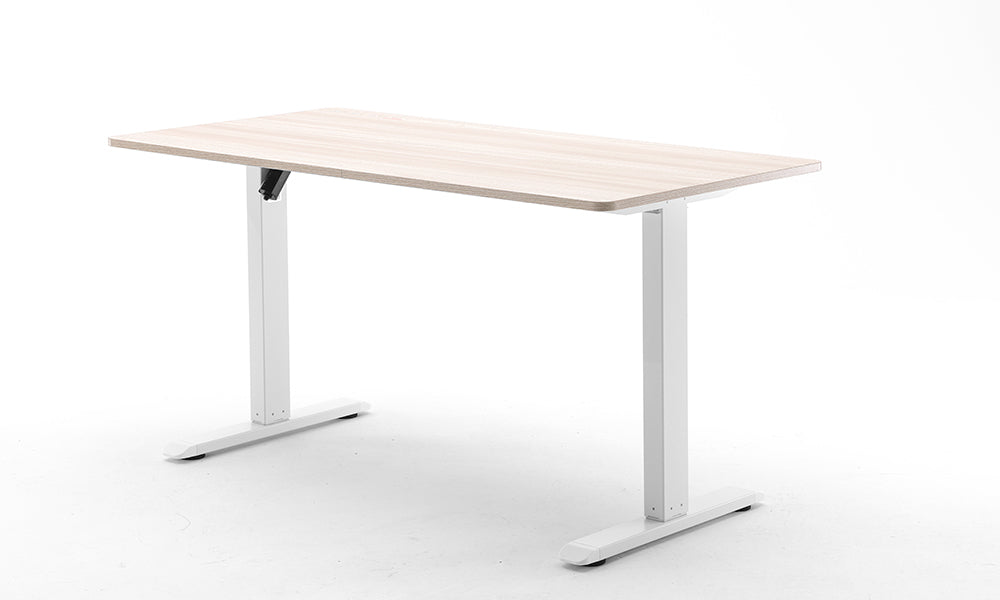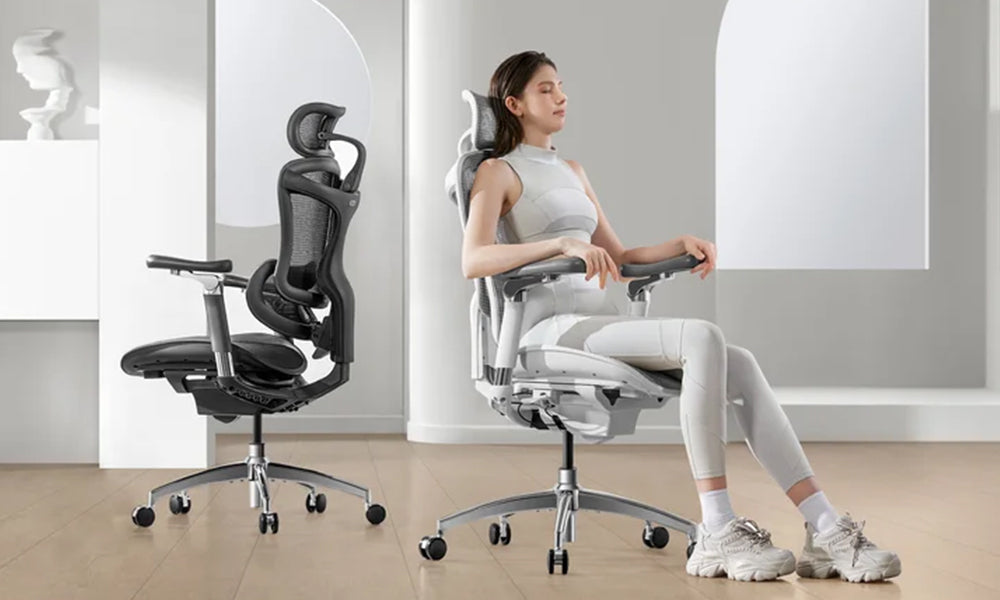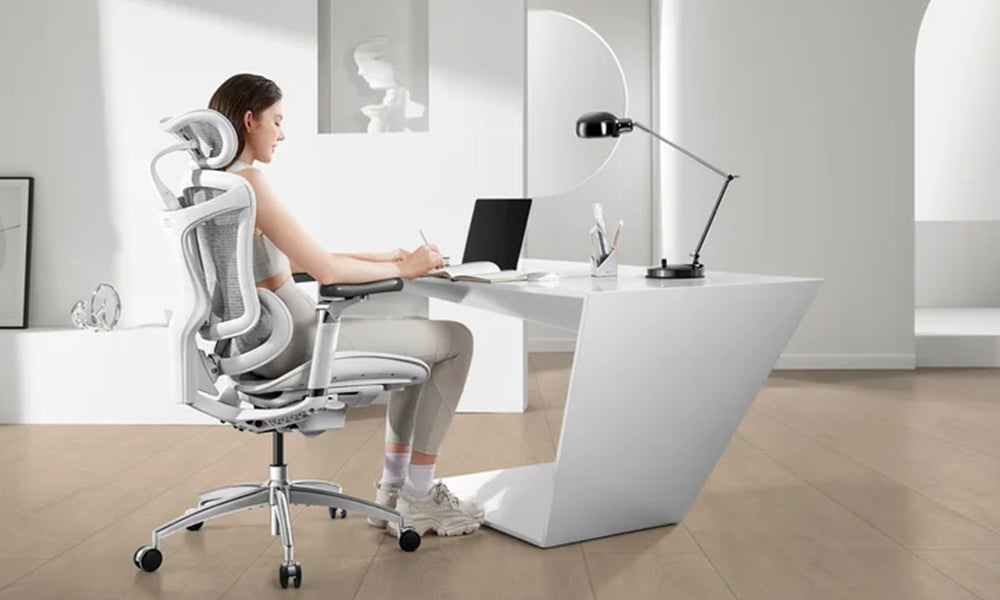In the modern work environment, many of us spend prolonged periods sitting at our desks, staring at screens, and often neglecting our physical health. This sedentary lifestyle has been linked to various health issues, from back pain to obesity. However, there's a less obvious yet equally significant area that might be impacted by how we work: our skin. Surprisingly, the introduction of adjustable standing desks might offer benefits that extend beyond musculoskeletal health, potentially aiding in the prevention and management of certain skin problems.
Understanding the Connection Between Desk Work and Skin Health
Before delving into how adjustable standing desks might influence skin health, it's essential to understand the factors in a typical office environment that can affect our skin:
- Prolonged Sitting: Sitting for extended periods can reduce blood circulation, which is vital for delivering nutrients and oxygen to the skin.
- Screen Exposure: Continuous exposure to blue light from screens has been suggested to contribute to skin aging and hyperpigmentation.
- Dry Air: Many office environments have low humidity, especially when air conditioning is used, which can lead to dry and irritated skin.
- Stress: High levels of work-related stress can exacerbate skin conditions like acne, eczema, and psoriasis.
Given these factors, the potential for an adjustable standing desk to mitigate some of these issues is worth exploring.
Improved Circulation and Skin Health
One of the primary benefits of using an adjustable standing desk is the ability to alternate between sitting and standing throughout the day. This dynamic approach can significantly improve blood circulation compared to prolonged sitting. Enhanced circulation means better delivery of oxygen and nutrients to the skin, which can promote a healthier complexion and aid in the repair of skin damage.
Improved circulation also helps in the removal of waste products from the skin. When blood flow is optimized, the skin can more effectively rid itself of toxins, potentially reducing the likelihood of breakouts and dull skin.
Reduction of Screen Exposure
Adjustable standing desks encourage movement and changing postures, which can indirectly reduce the amount of time spent in a fixed position staring at screens. Frequent breaks from screen time can minimize the skin's exposure to blue light, which is increasingly recognized as a contributor to skin aging and damage. By using a standing desk, individuals may naturally integrate more movement into their routine, thus breaking up periods of intense screen exposure and giving their skin a much-needed break.
Enhanced Air Quality and Skin Hydration
Standing desks can be positioned away from air conditioning vents and other sources of dry air more easily than traditional sitting desks. This flexibility can lead to a more favorable skin environment. Dry air can strip the skin of its natural oils, leading to dryness, flakiness, and irritation. By adjusting the position of the desk, users can find spots with better air circulation and humidity levels, which can help maintain skin hydration and integrity.
Stress Reduction and Skin Benefits
Standing desks have been shown to help reduce work-related stress and improve mood and energy levels. Lower stress levels can have a positive impact on skin health, as stress is a known trigger for many skin conditions, including acne, eczema, and psoriasis. By incorporating a standing desk into their routine, users might find themselves feeling less stressed and more energized, which can translate to healthier skin.
Practical Tips for Maximizing Skin Benefits with a Standing Desk
While an adjustable standing desk can offer various potential benefits for skin health, there are additional practices that can maximize these advantages:
- Regular Movement: Aim to change positions every 30 to 60 minutes. This could mean alternating between sitting and standing or taking short walks.
- Screen Breaks: Follow the 20-20-20 rule: every 20 minutes, take a 20-second break and look at something 20 feet away. This helps reduce eye strain and gives your skin a break from blue light exposure.
- Hydration: Keep a water bottle at your desk and make a conscious effort to drink water throughout the day to maintain skin hydration.
- Humidifier: Consider using a small desk humidifier to combat dry office air, especially during colder months when indoor heating can exacerbate skin dryness.
- Ergonomic Setup: Ensure your standing desk is set up ergonomically to avoid strain, which can indirectly increase stress levels and impact skin health.
- Healthy Diet: Complement your improved desk habits with a balanced diet rich in antioxidants, vitamins, and minerals that support skin health.
Potential Drawbacks and Considerations
While adjustable standing desks offer numerous benefits, it's important to be aware of potential drawbacks:
- Adjustment Period: Transitioning from a traditional desk to a standing desk can take some time. It’s important to gradually increase the amount of time spent standing to avoid discomfort or strain.
- Foot and Leg Discomfort: Standing for long periods can lead to discomfort in the feet and legs. Using an anti-fatigue mat and wearing supportive footwear can help mitigate these issues.
- Desk Height Adjustments: Ensuring the desk is at the correct height is crucial for maintaining proper posture and avoiding strain. This might require some trial and error.
Conclusion
The integration of an adjustable standing desk into your work routine can offer various health benefits, some of which extend to skin health. By improving circulation, reducing screen exposure, enhancing air quality, and potentially reducing stress levels, a standing desk can play a supportive role in maintaining healthy, vibrant skin. However, it's important to remember that a holistic approach—incorporating regular movement, proper hydration, a balanced diet, and good ergonomic practices—is key to reaping the full benefits for both overall well-being and skin health.
Ultimately, while an adjustable standing desk is not a cure-all for skin problems, it can be a valuable component of a broader strategy to support skin health in the context of a healthier, more active work environment.



